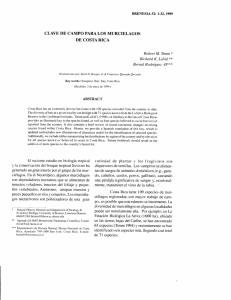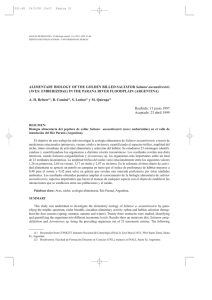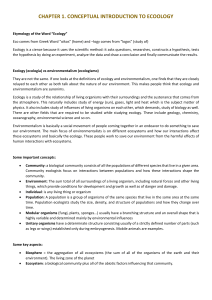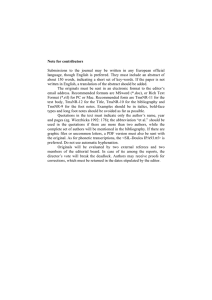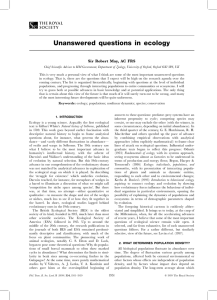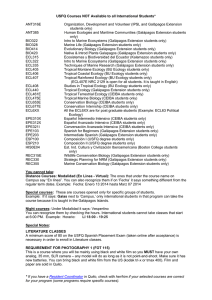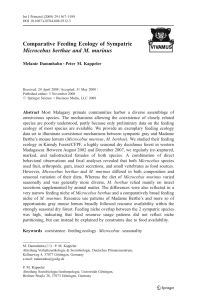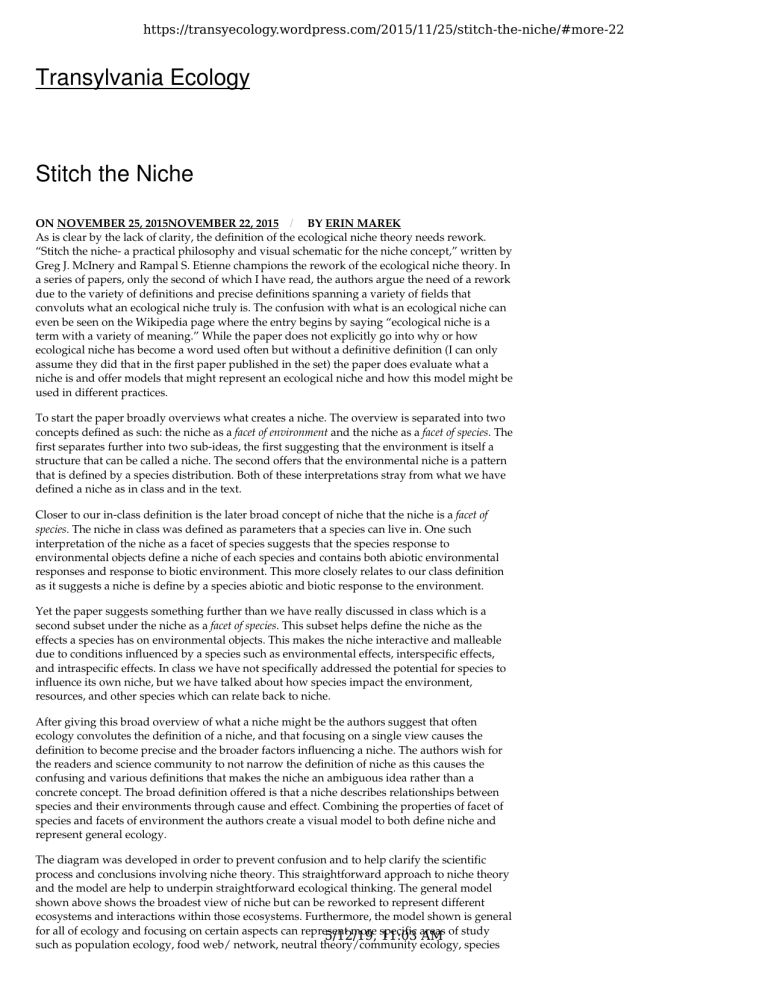
https://transyecology.wordpress.com/2015/11/25/stitch-the-niche/#more-22 Transylvania Ecology Stitch the Niche ON NOVEMBER 25, 2015NOVEMBER 22, 2015 / BY ERIN MAREK As is clear by the lack of clarity, the definition of the ecological niche theory needs rework. “Stitch the niche- a practical philosophy and visual schematic for the niche concept,” written by Greg J. McInery and Rampal S. Etienne champions the rework of the ecological niche theory. In a series of papers, only the second of which I have read, the authors argue the need of a rework due to the variety of definitions and precise definitions spanning a variety of fields that convoluts what an ecological niche truly is. The confusion with what is an ecological niche can even be seen on the Wikipedia page where the entry begins by saying “ecological niche is a term with a variety of meaning.” While the paper does not explicitly go into why or how ecological niche has become a word used often but without a definitive definition (I can only assume they did that in the first paper published in the set) the paper does evaluate what a niche is and offer models that might represent an ecological niche and how this model might be used in different practices. To start the paper broadly overviews what creates a niche. The overview is separated into two concepts defined as such: the niche as a facet of environment and the niche as a facet of species. The first separates further into two sub-ideas, the first suggesting that the environment is itself a structure that can be called a niche. The second offers that the environmental niche is a pattern that is defined by a species distribution. Both of these interpretations stray from what we have defined a niche as in class and in the text. Closer to our in-class definition is the later broad concept of niche that the niche is a facet of species. The niche in class was defined as parameters that a species can live in. One such interpretation of the niche as a facet of species suggests that the species response to environmental objects define a niche of each species and contains both abiotic environmental responses and response to biotic environment. This more closely relates to our class definition as it suggests a niche is define by a species abiotic and biotic response to the environment. Yet the paper suggests something further than we have really discussed in class which is a second subset under the niche as a facet of species. This subset helps define the niche as the effects a species has on environmental objects. This makes the niche interactive and malleable due to conditions influenced by a species such as environmental effects, interspecific effects, and intraspecific effects. In class we have not specifically addressed the potential for species to influence its own niche, but we have talked about how species impact the environment, resources, and other species which can relate back to niche. After giving this broad overview of what a niche might be the authors suggest that often ecology convolutes the definition of a niche, and that focusing on a single view causes the definition to become precise and the broader factors influencing a niche. The authors wish for the readers and science community to not narrow the definition of niche as this causes the confusing and various definitions that makes the niche an ambiguous idea rather than a concrete concept. The broad definition offered is that a niche describes relationships between species and their environments through cause and effect. Combining the properties of facet of species and facets of environment the authors create a visual model to both define niche and represent general ecology. The diagram was developed in order to prevent confusion and to help clarify the scientific process and conclusions involving niche theory. This straightforward approach to niche theory and the model are help to underpin straightforward ecological thinking. The general model shown above shows the broadest view of niche but can be reworked to represent different ecosystems and interactions within those ecosystems. Furthermore, the model shown is general for all of ecology and focusing on certain aspects can represent more specific areas of study 5/12/19, 11:03 AM such as population ecology, food web/ network, neutral theory/community ecology, species https://transyecology.wordpress.com/2015/11/25/stitch-the-niche/#more-22 distribution modeling, and more. The generality and unambiguous connection to ecology of the model presented dissipates many of the rivalries between very specific models. The authors worked to devise a wholesome and general niche model that does not depend on precise definitions or specific details. But does the general model actually have useful implications in science today? I believe it does. The authors make a compelling argument that the niche helps to define ecology and ecosystems as well as more specific details to species. The niche connects to many different studies of ecology including those mentioned above including population ecology and food webs. These kinds of ecology, and all ecology, depends on connections between species, abiotic, and biotic factors all of which are included in the general niche model. Niche, as discussed in class, define the parameters in which a species can live. With the changing world and the constant changes in global temperatures and environments, understanding the niche of species can help predict the changes influence on specific species and populations. As species have many external factors they respond and effect, the stitch the niche model can provide a frame to demonstrate these interactions. REPORT THIS AD CREATE A FREE WEBSITE OR BLOG AT WORDPRESS.COM. 5/12/19, 11:03 AM

